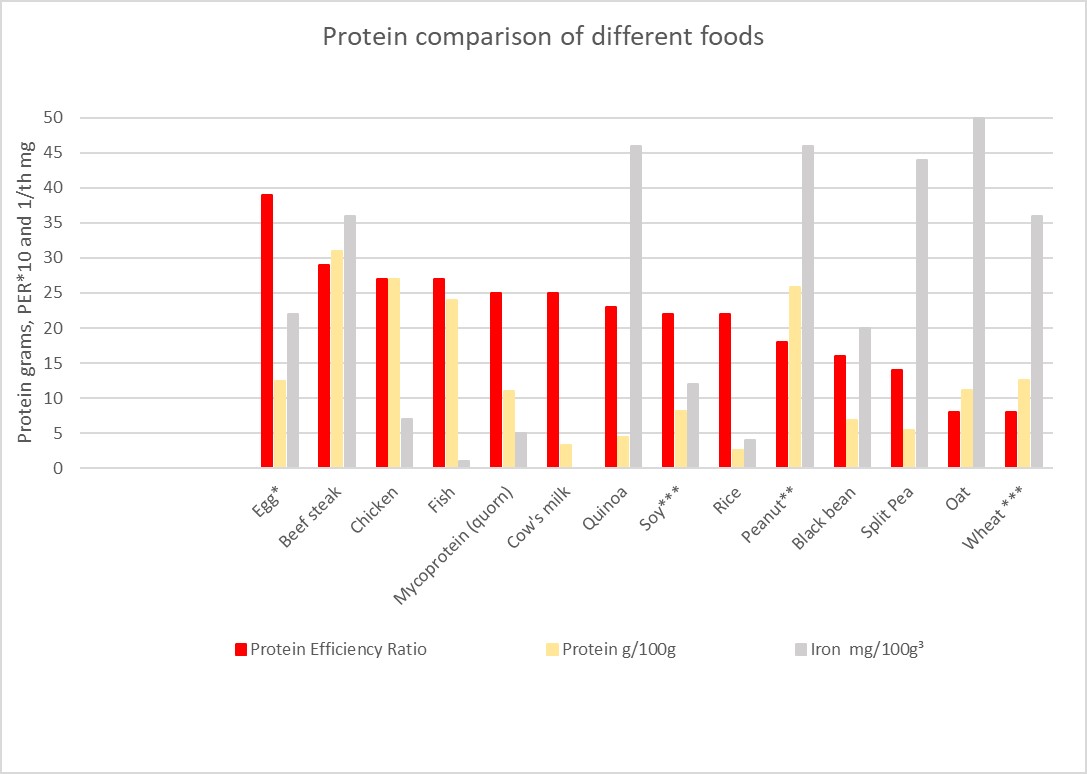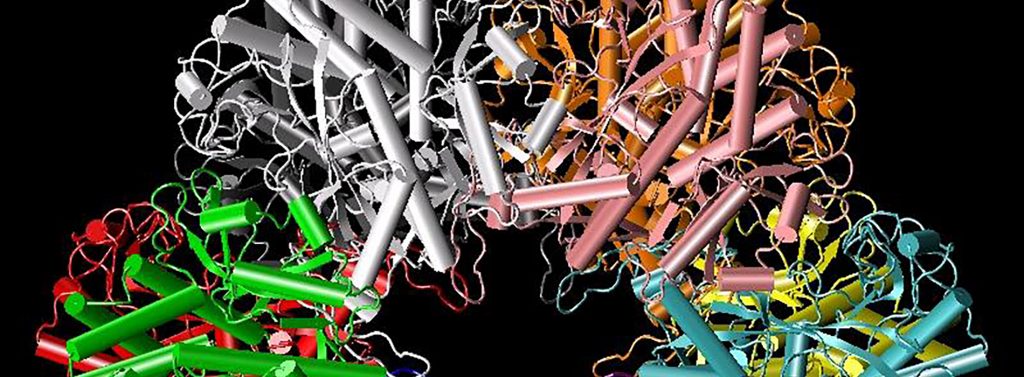How much protein should I eat?
In the UK public health advisors suggest that we eat about 0.75g/protein/kg weight/day. That means for a 65kg woman, of normal build and average height, you would need about 50g of protein per day. For a long time, we thought that everyone was eating loads more than this amount, but since the rise of food fads, ready meals and vegetarian eating, many people may not be eating enough.
Nowadays science suggests that 0.75g/kg/d is a minimum. If you are older, or sicker, you might need closer to 1g or even 1.2g per day. That would be almost 90g per day, or 30g per meal. Other countries such as Norway, Australia and New Zealand are actively suggesting that older people should eat a higher percentage of protein in their diet. That means cutting out fats and sugars and increasing the portion of protein. Even in the UK NHS recommendations are higher for hospitalised older patients especially if they have a raised immune response, like a fever.
As we get older our immune system tends to go into overdrive and we need protein to fuel the immune response. If we don’t get enough protein in our diet, amino acids (the building blocks of protein) are scavenged from our muscles, giving older and sick people the familiar signs of emaciation.
How much protein in…?

In order of quality and digestibility the table above provides a quick guide to healthy protein. While most nutritional guidelines look at the simple quantity of pure protein in food (the orange bars in the graph at the top of the page) it is also important to look at the amount of other nutrients in the food and how well the proteins in different foods are digested. The Protein Efficiency Ratio (the red bars above) is a useful guide. It measures how much protein will actually benefit your body. From these diagrams we can see that eggs are the most beneficial, followed by animal proteins, milk and mycoprotein (Quorn), with cereals not far behind. If you’re on a lactose free or gluten free vegetarian diet beware – you are missing out on some very important sources of digestible protein.
What is complete protein?
Each food is made up on a mixture of amino-acids, which are the building blocks for protein. A complete protein food contains the correct balance of amino acids in proportions required by humans. Milk, eggs, quinoa and split peas are considered complete proteins. But we rarely eat a meal with only one type of protein in it. Cheese on toast, eggs and bacon, rice and beans are all familiar protein mixtures. As long as we are eating a range of foods, we shouldn’t need to worry too much about selecting only complete proteins.
Do I need to eat meat for iron?
Meat, especially offal, provides a very good source of easily absorbable iron – it is called haem iron. If you don’t eat enough iron you can suffer from anaemia. Iron from plant sources is more easily absorbed if taken with Vitamin C. Vegans must also be careful about vitamin B12, which is only found in large quantities in animal sources. Lack of vitamin B12 takes a long time to show up, but causes pernicious anaemia. The vegan society advises vegans to supplement their diet with B12. The grey bars in the diagram above indicate which protein foods are high in iron as well.
What does protein do in our body?
Protein is used to build tissue, muscles and organs, to fuel our immune system, to make hormones and endocrines and to provide the raw materials for DNA. Every day pretty-well every one of the 37.2 trillion cells within our body will use the amino acids from proteins we eat to repair or manage the cell’s processes. The nucleus of each cell distributes strands of mitochondrial DNA that hold the blueprint for whatever needs to be made. There are thousands of different combinations. A strand of DNA might hold the design for myosin for muscle building, natural insulin to manage our metabolism or serotonin transporters that conduct serotonin to the brain. It is all made by complex cellular processes for immediate use. It is this immediacy of need and the lack of storage of protein (except in muscles) that makes eating regular protein meals really important. Lack of a certain amino acid can interfere with the smooth running of this process, leading to everything from muscle weakness to depression. Alongside these cells the body contains about 100 trillion microbial cells, all made of reconstructed proteins we have eaten. Our microbiome are miniscule microbes, tiny organisms in their own right. The beneficial ones, derived from a balanced diet and a healthy body helps us digest food, resist infection and regulate bodily processes.
Protein is a very different nutrient to carbohydrate and fats because it is not stored in the body in the same way. When you eat protein the body immediately transforms it into something useful, or uses it to lay down muscles. If we don’t eat enough protein our body will raid the muscles to provide enough amino acids for new processes. That means that we should eat protein at least three times a day and in roughly equal measures, for breakfast, lunch and dinner. The older we get, the less able we are to efficiently digest and process protein which is why it become more important to eat more protein and eat it regularly.
How does protein relate to muscle strength?
Because the body uses muscle protein as a store of amino-acids our muscles are very vulnerable to raiding. This raiding of muscles gets worse as we age. It can lead to many types of frailty, falls and is even linked to the onset of dementia. In order to maintain good muscle strength, we need to keep eating protein and keep active. Resistance or weight bearing exercise is particularly good for maintaining muscle strength. That doesn’t necessarily mean going to the gym. Dancing, games like tennis and gardening all include muscle building activity. The best advice is keep moving, and keep eating protein.
How can I increase my protein intake?
I don’t advise anyone to bother with protein shakes or expensive supplements. Protein and two veg – not necessarily meat – is still the best combination for a main meal. The simplest way is to plan your meals around the protein content. Make use of simple ingredients like wholemeal bread, milk and eggs. Consider scrambled eggs on toast for breakfast, a full-milk latte mid-morning, a slice of wholemeal bread and peanut butter instead of cake mid-afternoon, or a warming cup of coco before you go to bed. These will all bring more power-to-your-elbow.
NOTES
1. * 1 egg is approximately 75g. ** 100g peanuts contains almost 50g fat, ie about 75% of the daily allowance of fat. *** Quality and level of digestability of wheat and soy differs depending on the cultivar and growing conditions. Note that iron content of wheat refers to wholemeal wheat flour. White flour is by law fortified with iron, but does not contain as much as natural wholemeal flour.
2. Protein Efficiency Ratio is a measure of how nutritious the food is compared to eggs which are considered to be the most nutritious and easily digested protein for their calorific content.
3. Iron is measured in 10th mg
The featured image is a detailed diagram of the structure of the enzyme, glutamine synthetase which plays an important role in brain, liver and kidney metabolism. It is one of approximately 12,000 different types of polypeptides (body proteins) that are present in the human body.
